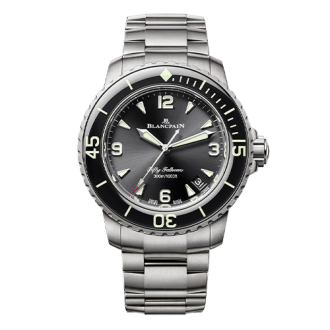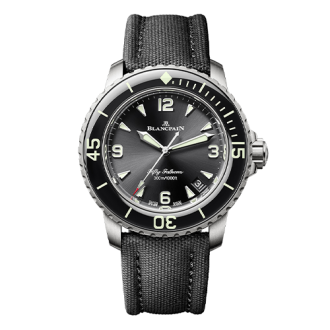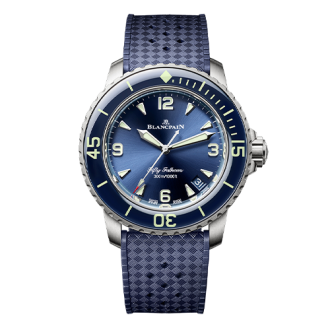In the cult science-fiction odyssey The Hitchhiker’s Guide to the Galaxy by Douglas Adams, the supercomputer Deep Thought reveals the answer to “The Ultimate Question of Life, the Universe and Everything” — a problem it has been calculating for 7.5 million years. The answer, which befuddles the novel’s characters and has fascinated geeks ever since its publication, is at once banal and mysterious, provoking theories and speculation both within the book narrative and in the real world. The answer to everything, according to the fictional AI entity Deep Thought, is “42”.
What’s so special about the number 42? When pressed for a definitive explanation, Douglas Adams replied that he had deliberately chosen a simple number at random, without putting too much thought into it, in the same vein as the other pseudo-scientific elements he had written into his books. Nevertheless, scientists and mathematicians seized on this number as a sort of nerd culture shibboleth, making obscure and overt references to it in their work as a secret wink to other members of the Hitchhiker fandom. Jean-Paul Delahaye, professor emeritus of computer science at the University of Lille, wrote an essay dissecting the unique qualities of the number 42. European culture TV channel ARTE produced a documentary series called “42 — La réponse à presque tout” (42 — The answer to almost everything), exploring various science-related topics. In the world of watchmaking, a world with its fair share of geeks and scientists, the number 42 is frequently encountered in context of case diameters. And if you ask Blancpain, makers of the fabled Fifty Fathoms dive watch, what the perfect case diameter for a sports watch is, you might find out that at this precise moment in the history of the universe, their answer is… You guessed it: 42.

There was a period in the early 2000s (thankfully a very brief period) where watches seemed to be on a gym-and-steroids regimen, bulking up to a fearsome degree. This applied not only to sports watches, in which a certain size and muscularity might be justified, but all across the board. Here at WorldTempus, we’re all for the freedom to wear what you like, even if it looks like you’ve got a dinner plate strapped to your wrist. But it must be admitted that we all heaved a sigh of relief when this trend passed, and watches began deflating to sizes more coherent and proportional with our wrists.
The one watch category in which it still makes sense to offer case diameters well in excess of 40mm is sports watches, specifically dive watches. There are historical reasons why dive watches needed to be bigger, reasons actually related to the preservation of the diver’s life. First of all, dive watches need to be highly legible, which requires a large dial. It’s hard enough to read anything underwater — imagine trying to read a tiny little dial with skinny hands in murky waters when you need to check how long you have before your oxygen starts running out. Secondly, a dive watch needs to be reliable. If it’s a mechanical watch, the movement within should be robust and powerful enough to handle shocks and other environmental stresses without losing or gaining time. In other words: the bigger the better.
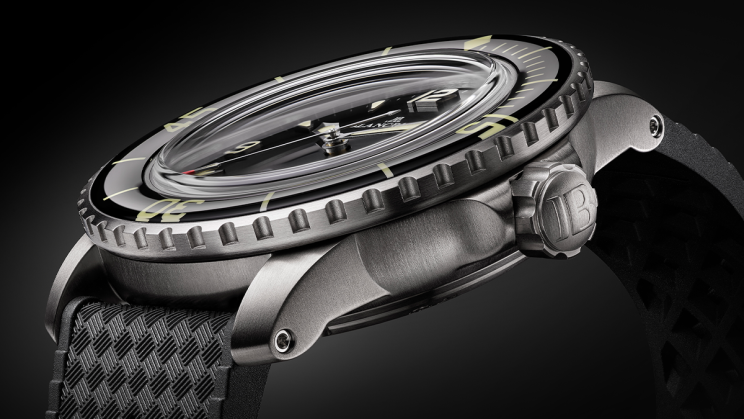
Keeping the inner workings of the watch well protected is the job of the case, and before today’s high-precision machining technology and sophisticated waterproofing techniques existed, the best way of protecting a watch underwater was to wrap it in as much exterior metal as possible. Add in a soft iron cage between the movement and the case, for anti-magnetic purposes, and before you know it, your dive watch looks like something that you could crack open rocks with.
You know what addresses all those points above? That’s right, the Blancpain Fifty Fathoms Automatique 42mm. (It really is the answer to everything, at least in this situation.) It is supremely legible. Wide hands and dial/bezel markers filled with Super-LumiNova, domed crystals over the dial and bezel to maximise visibility even in suboptimal lighting conditions. The powerhouse automatic cal. 1315 with five days of power reserve is designed to offer optimum energy distribution to the balance, ensuring top chronometric performance at all times.
The sizable 42mm case is large enough to accommodate the large, practical dial and a wide, easy-to-use bezel, while its height comfortably houses the cal. 1315 and provides a reassuring heft on the wrist, especially in the red-gold model. For those who prefer a less obtrusive presence and feel, a titanium model is also available. The titanium chosen for the Fifty Fathoms Automatique 42mm is a step up from the grade 5 titanium that we usually see in high-end titanium wristwatches. Known as grade 23 titanium in industrial applications, this titanium alloy has all the advantages as grade 5 titanium, containing precise amounts of aluminium (for ductility and resilience) as well as vanadium (imparting qualities of anti-corrosion and temperature stability).
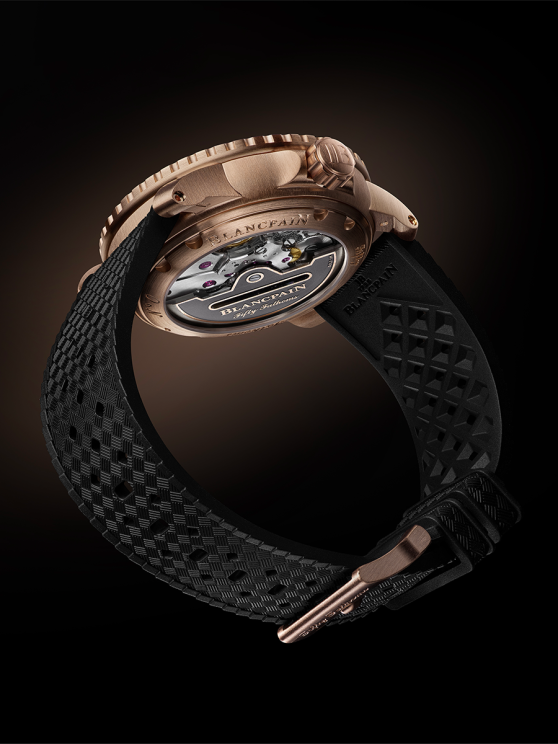
What sets grade 23 titanium apart from grade 5 titanium is its structural purity, as it contains lower percentages of oxygen, nitrogen and iron, elements which are not part of the alloy but exist as tiny inclusions introduced during the process of producing titanium alloys. Titanium in general is classed as a hypoallergenic material, which allows for its use in medical applications such as prostheses and implants where bio-compatibility is of prime importance. Its elite properties, especially in grade 23 titanium alloys, emphasises the functional and qualitative approach of Blancpain in building the best possible watch for professional and recreational diving.
In the past, anti-magnetic measures for a wristwatch meant integrating a soft iron case around the movement — similar to the principle of how a Faraday cage protects sensitive equipment from electrical interference. Modern innovations in watchmaking have enabled manufacturers to move away from this cumbersome solution, since the components most vulnerable to magnetic influence can now be made in amagnetic materials such as silicon. Blancpain is uniquely positioned to exploit such materials, due to the pioneering role of their parent company in adapting silicon to horological uses, not to mention other group-proprietary materials such as Nivagauss and Liquidmetal (both amorphous metal alloys highly resistant to magnetism). As a result, the Fifty Fathoms collection has featured a transparent caseback for some time, and the 42mm models take full advantage of this to showcase the cal. 1315.
One final word about the case diameter: while 42mm and 38mm case sizes already exist in the Fifty Fathoms Bathyscaphe sub-family, the main Fifty Fathoms collection currently only exists in 45mm models, apart from last year’s anniversary model, the limited-edition Fifty Fathoms 70th Anniversary Act 1. With these two new Fifty Fathoms Automatique 42mm versions, Blancpain’s iconic dive watch is poised to deliver a more wearable and compact future for the collection, and there are even hints that a smaller model might follow. For now, the magic number stays at 42, and while it may not be the answer to everything for all time, it certainly gets the job done on our journey through the Blancpain universe.


